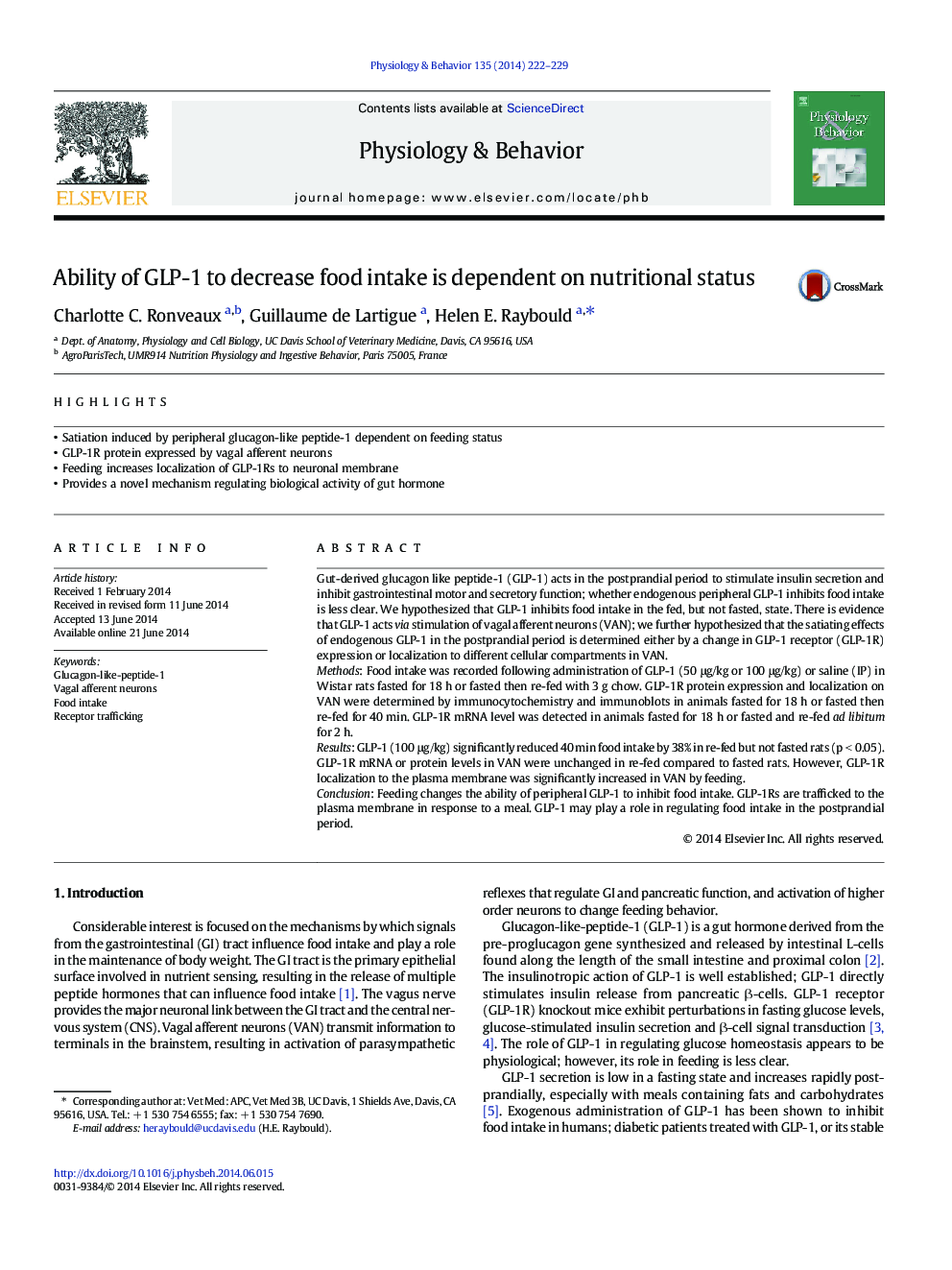| Article ID | Journal | Published Year | Pages | File Type |
|---|---|---|---|---|
| 2844265 | Physiology & Behavior | 2014 | 8 Pages |
•Satiation induced by peripheral glucagon-like peptide-1 dependent on feeding status•GLP-1R protein expressed by vagal afferent neurons•Feeding increases localization of GLP-1Rs to neuronal membrane•Provides a novel mechanism regulating biological activity of gut hormone
Gut-derived glucagon like peptide-1 (GLP-1) acts in the postprandial period to stimulate insulin secretion and inhibit gastrointestinal motor and secretory function; whether endogenous peripheral GLP-1 inhibits food intake is less clear. We hypothesized that GLP-1 inhibits food intake in the fed, but not fasted, state. There is evidence that GLP-1 acts via stimulation of vagal afferent neurons (VAN); we further hypothesized that the satiating effects of endogenous GLP-1 in the postprandial period is determined either by a change in GLP-1 receptor (GLP-1R) expression or localization to different cellular compartments in VAN.MethodsFood intake was recorded following administration of GLP-1 (50 μg/kg or 100 μg/kg) or saline (IP) in Wistar rats fasted for 18 h or fasted then re-fed with 3 g chow. GLP-1R protein expression and localization on VAN were determined by immunocytochemistry and immunoblots in animals fasted for 18 h or fasted then re-fed for 40 min. GLP-1R mRNA level was detected in animals fasted for 18 h or fasted and re-fed ad libitum for 2 h.ResultsGLP-1 (100 μg/kg) significantly reduced 40 min food intake by 38% in re-fed but not fasted rats (p < 0.05). GLP-1R mRNA or protein levels in VAN were unchanged in re-fed compared to fasted rats. However, GLP-1R localization to the plasma membrane was significantly increased in VAN by feeding.ConclusionFeeding changes the ability of peripheral GLP-1 to inhibit food intake. GLP-1Rs are trafficked to the plasma membrane in response to a meal. GLP-1 may play a role in regulating food intake in the postprandial period.
